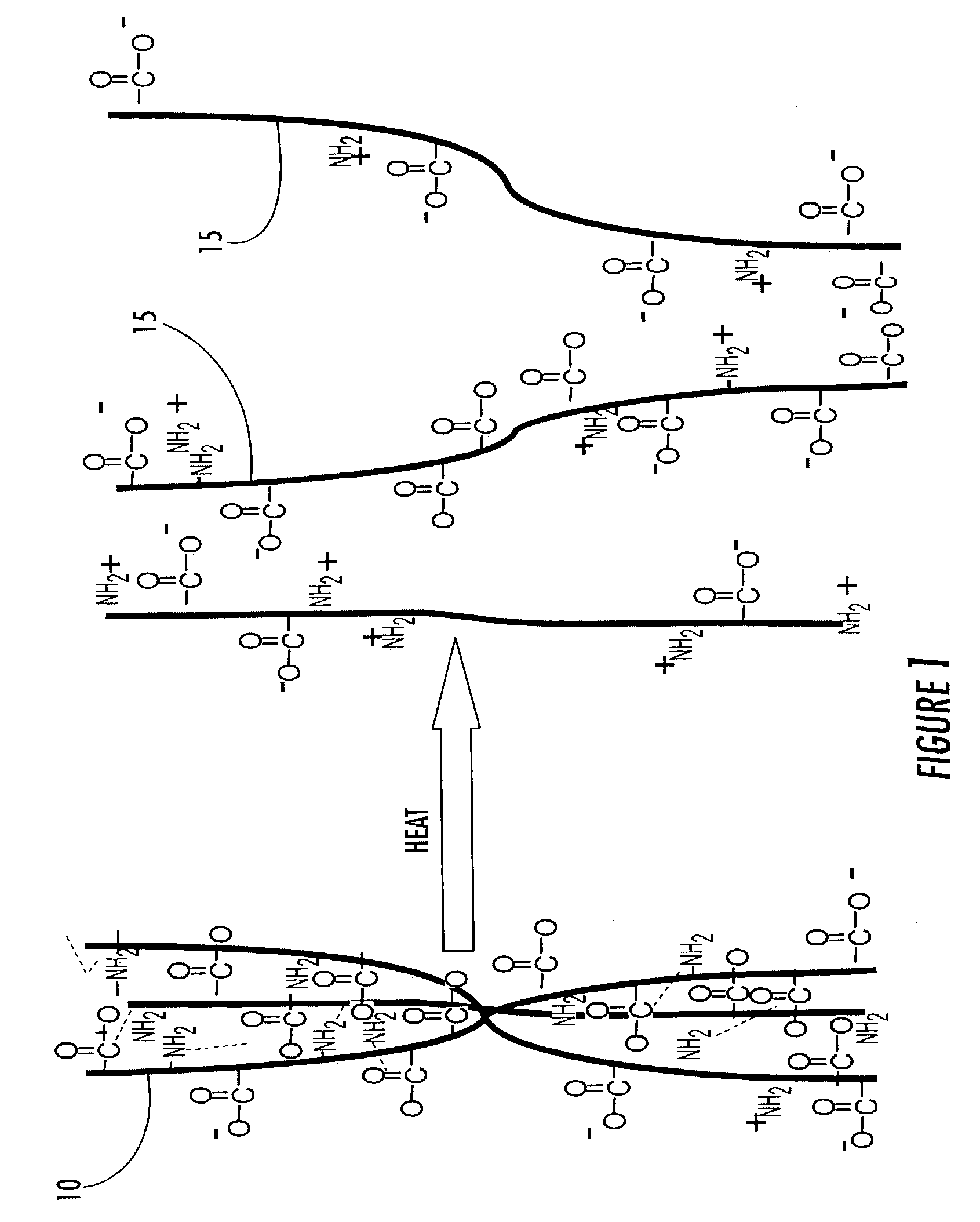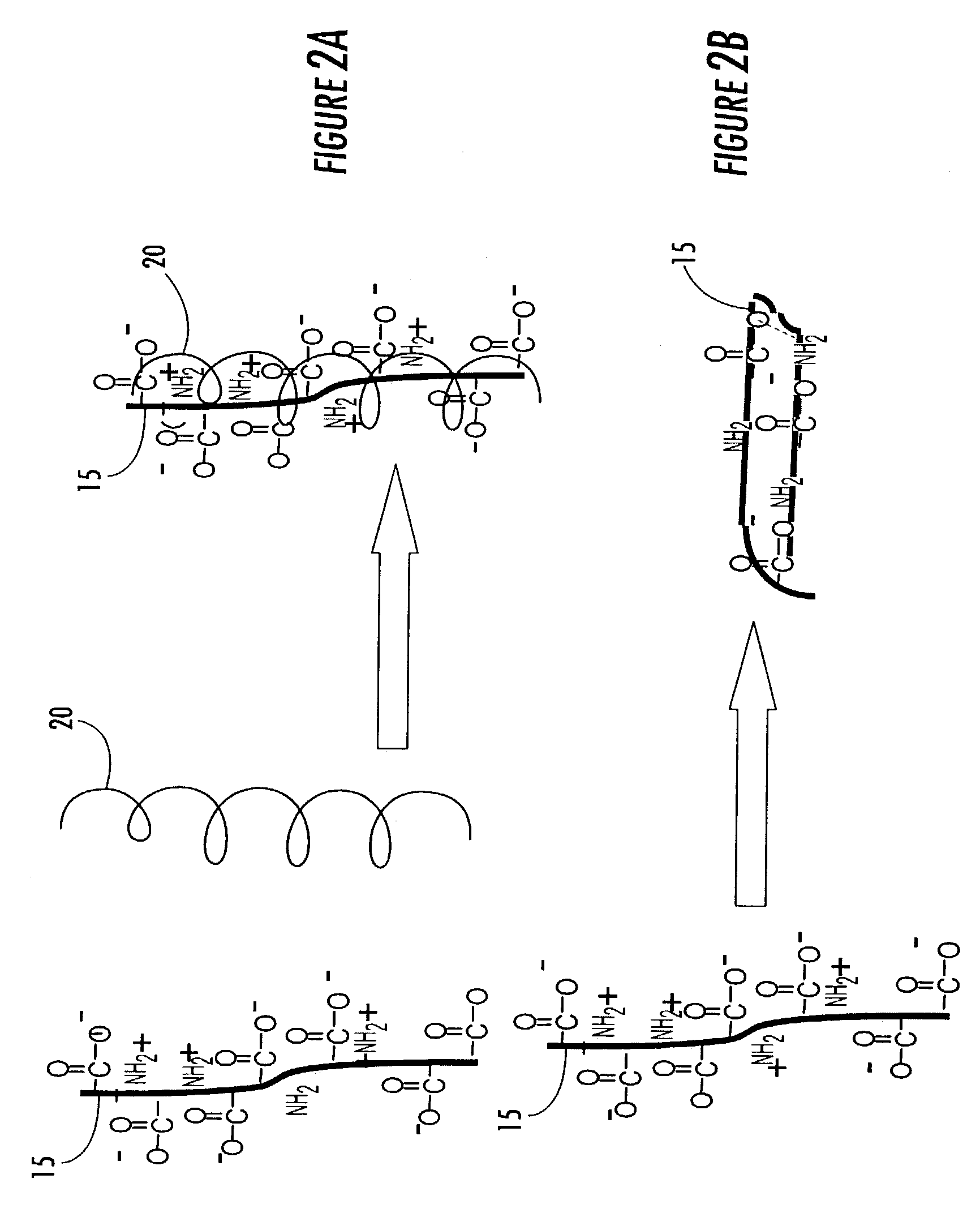Immobilized bioactive hydrogel matrices as surface coatings
a bioactive hydrogel and surface coating technology, applied in the field of crosslinked bioactive hydrogel matrices, can solve the problems of limiting the life and usefulness of implanted medical devices, affecting the healing response of wounds, and affecting the use of bioactive thermoreversible hydrogel as a biomaterial coating for medical devices, etc., to achieve the effect of improving the intimate contact, reducing the surrounding avascular capsules, and improving tissue integration of medical devices
- Summary
- Abstract
- Description
- Claims
- Application Information
AI Technical Summary
Benefits of technology
Problems solved by technology
Method used
Image
Examples
example 1
[0090]A beaker with an internal volume of 50 mL was equipped with two copper electrodes at a 2.5 cm separation. The beaker was filled with an aqueous solution of liquid thermoreversible hydrogel containing dextran and gelatin. A potential difference of 18 V was applied across the cell. A hydrogel complex consisting of the covalently cross-linked thermoreversible hydrogel formulation immediately formed on the surface of the anode, and the thickness of the film increased with increasing time. The sterile hydrogel was insoluble in water at 37° C., was adherent to the underlying substrate and conformed to the surface of the anodic metal.
[0091]One skilled in the art would readily recognize the utility of this method for producing adherent hydrogel coatings on metallic substrates such as titanium meshes used for reconstructive surgery. Such bioactive hydrogel coatings are expected to improve the vascularity and osteointegration of the implant.
example 2
[0092]Activated biomaterial surfaces suitable for having the hydrogel matrix cross-linked thereto can be prepared by copolymerization of monomers containing bifunctional groups, one of which is protected. For example, the monomer glycidyl methacrylate can be copolymerized using free radical initiation with other acrylates to form hydrogels, and hydrogel films. Poly(2-hydroxyethyl methacrylate-co-glycidyl methacrylate)-poly(HEMA-GMA) hydrogel films can be prepared by UV-initiated photopolymerization with α,α′-azoisobutyronitrile (AIBN) as an initiator, preferably under an inert atmosphere at 25° C. The epoxide content of the hydrogel films can be varied by varying the relative ratio of HEMA to GMA. For example, films with a high density of epoxides can be prepared by mixing 0.2 mL of HEMA, 0.8 mL GMA, 1 mL isopropyl alcohol, 10 mg AIBN (as a polymerization initiator), and 3.0 mL of 0.1M phosphate buffer (pH=7.0). The resulting mixture is stirred and equilibrated at 25° C. for 15 min ...
PUM
| Property | Measurement | Unit |
|---|---|---|
| Thickness | aaaaa | aaaaa |
| Thickness | aaaaa | aaaaa |
| Mass | aaaaa | aaaaa |
Abstract
Description
Claims
Application Information
 Login to View More
Login to View More - R&D
- Intellectual Property
- Life Sciences
- Materials
- Tech Scout
- Unparalleled Data Quality
- Higher Quality Content
- 60% Fewer Hallucinations
Browse by: Latest US Patents, China's latest patents, Technical Efficacy Thesaurus, Application Domain, Technology Topic, Popular Technical Reports.
© 2025 PatSnap. All rights reserved.Legal|Privacy policy|Modern Slavery Act Transparency Statement|Sitemap|About US| Contact US: help@patsnap.com



